Reading time: 6 minutes
Leslie Frederick Hoy was born in 1905 in West Maitland. In 1941 he was 35 years old, working as a manager, serving in the militia, and divorced, though living with his eldest daughter, Enid Margaret Hoy, on Lord Street, Asquith. In April of that year, Australian troops joined their British and New Zealand counterparts in an effort to prevent an Axis takeover of Greece.
Over 25 days of fighting, numerically superior and better-armed German forces managed to gain the upper hand. Although most Allied forces were evacuated to Crete and other locations, over 2,000 Australians were captured, and more than 300 were killed. The Greek Campaign of 1941 effectively ended on April 30, 1941, when Axis forces completed their occupation of mainland Greece. On that same day, Leslie Frederick Hoy enlisted at Martin Place.
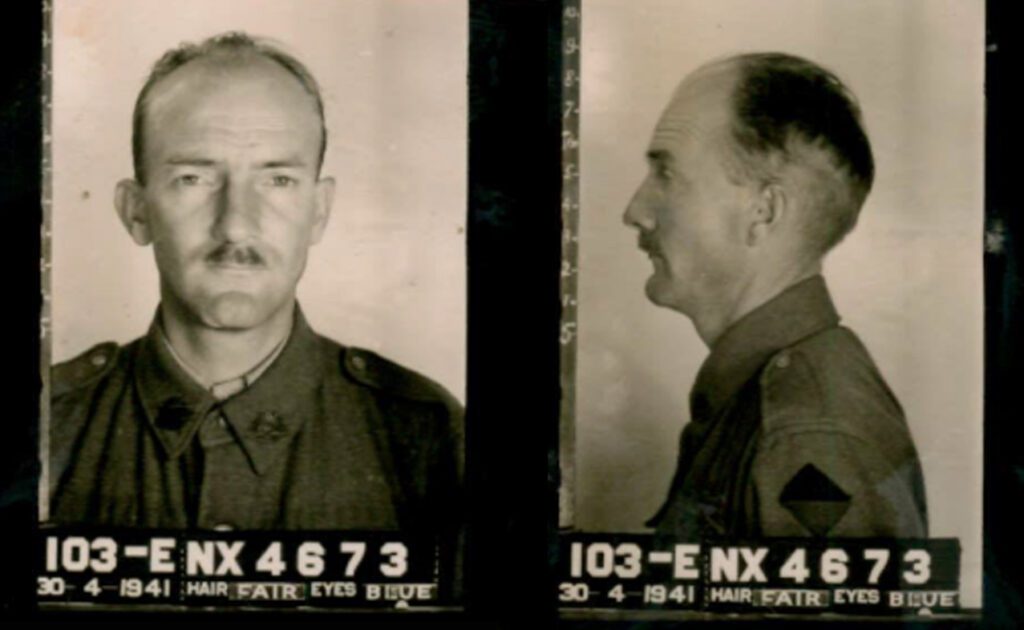
Leslie had surely known men who had fought in Greece, and it is likely that some of them were killed or captured there. For someone who grew up during the Great War and its immediate aftermath, it comes as no surprise that he felt it his patriotic duty to do his part in the World War of his day. On 27th June 1941, Leslie embarked on a troop ship heading to Egypt. A month later, he reached his destination, and on 1st August, he was in Palestine. The very next day, he was promoted to Acting Sergeant. He took part in general military training, as well as specialising in using machine guns.

On 6th September 1941, Leslie Frederick Hoy joined D company, 2/1st Australian Machine Gun Battalion, a unit established in 1939 as part of the 6th Division of the Second Australian Imperial Force (2nd AIF). Its primary role was to provide heavy machine-gun support to infantry units, delivering sustained firepower. This posting to a new unit, with different roles and responsibilities, saw Leslie’s rank reverted to Private. This was no reflection of his skills or experience, simply a fact of taking on a new military specialisation, where he would need to spend time under training before he could be expected to lead soldiers in combat.
By the time Leslie joined, the battalion had already seen combat in both mainland Greece and Crete. The 2/1st Australian Machine Gun Battalion had suffered heavy losses and was reconstituted in Palestine and Syria. While stationed here the battalion primarily served as a garrison force and trained for future operations. This garrison activity included establishing defences on bridges, railways and other key points in their vicinity, with patrols to guard against German airborne landings.
Their training was realistic and demanding, involving many long marches through the hills of Palestine and Syria, working with other units to simulate offensive and defensive operations. It also involved lots of sport and fitness training. Soon after Leslie arrived the battalion competed in a swimming and lifesaving competition, winning the Rescue competition.
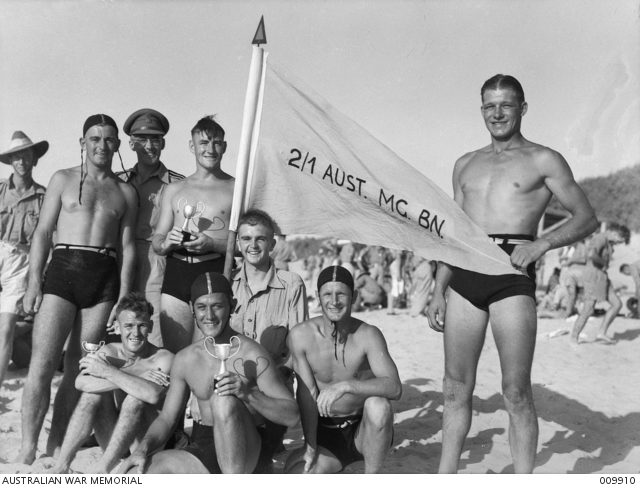
With Japan’s entry into the war, the battalion was ordered back to Australia, arriving in March 1942. After six month of regular service in Australia Leslie was assigned to a training battalion, assisting other Australian soldiers to prepare for the tough combat environment they were soon to face in the Pacific.
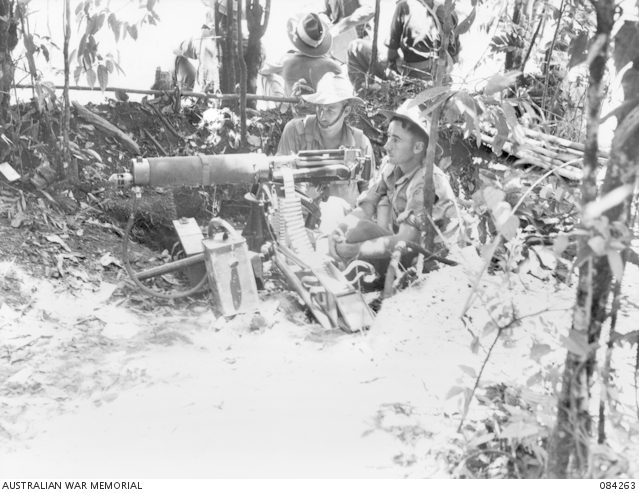
However, combat was not the only danger of military life, as Leslie soon discovered from his own experiences. In October 1942 he began to experience medical issues, possibly as a result of his service in the Middle East. He had to be treated in hospital and, but by late December had rejoined his unit. He was admitted to hospital again in February of the following year. In June 1943 he was promoted to Staff Sergeant, recognising his wealth of experience, both in and out of the military. Staff Sergeant was a senior non-commissioned officer position with substantial leadership and administrative responsibilities. It was a respected rank, often held by experienced soldiers who demonstrated strong leadership skills and technical expertise. Additionally, Staff Sergeants had significant authority over enlisted personnel and were crucial to the daily functioning and combat readiness of their units. Leslie’s experience as a militia and AIF veteran and his managerial skills would have made him a valuable asset to his unit. In December 1943 he had a severe case of conjunctivitis which saw him hospitalised. In January 1944, Leslie injured his foot, and in June of the same year, he suffered from laryngitis, all requiring time away from his unit.
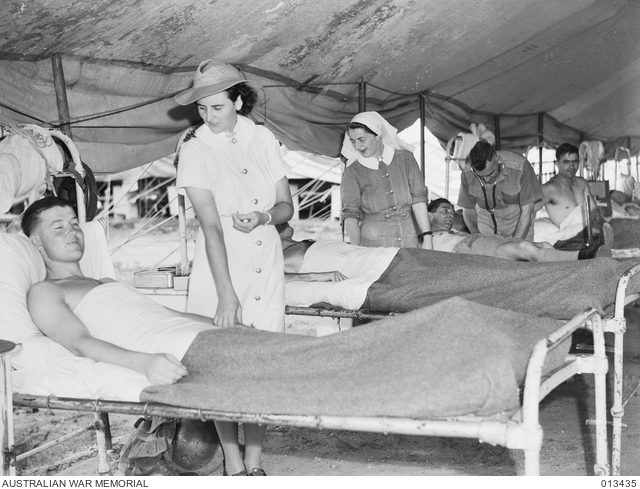
Leslie continued in a training role, as well as qualifying as an Army clerk. He was finally demobilized in July 1946, having served for 1,899 days, of which 278 were overseas.
Leslie passed away in January 1959, his life undoubtedly shortened by ailments suffered during his service. For his contribution, he was awarded the Defence Medal, War Medal 1939/45, and Australia Service Medal 1939/45.
Articles you may also like
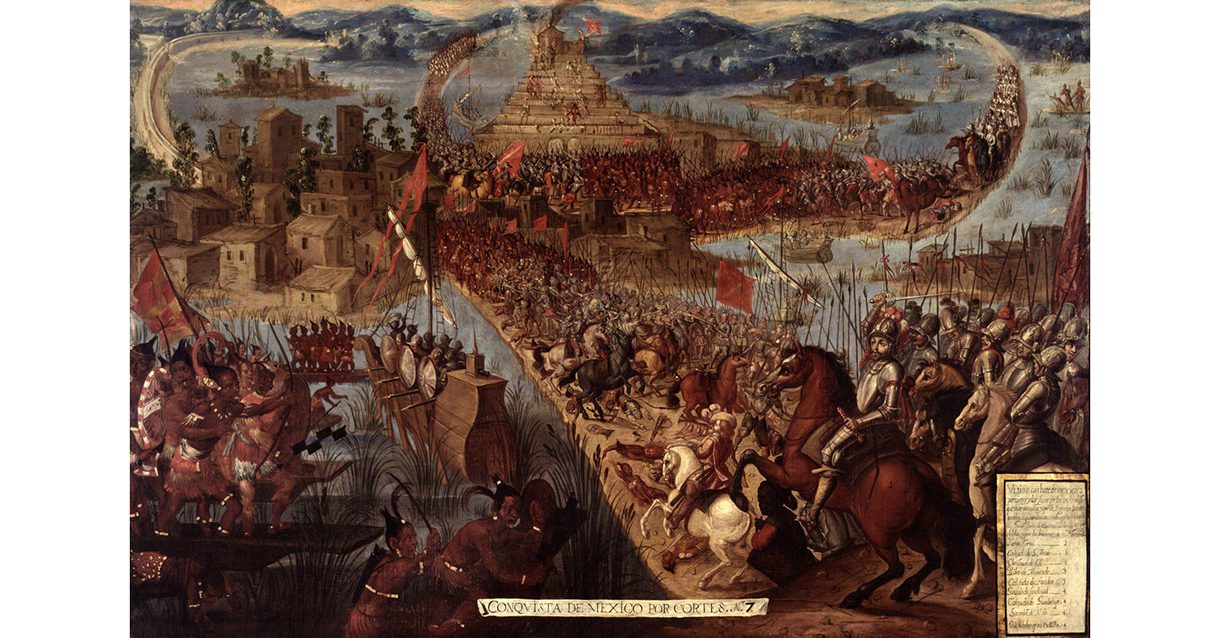
Weekly History Quiz No.258
1. When did the Spanish Empire reach its greatest extent?
Try the full 10 question quiz.
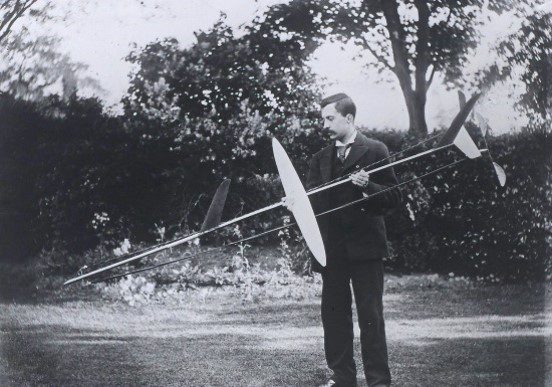
Frederick Lanchester and why quantity has a quality all of its own
Reading time: 5 minutes
Lanchester turned his mind to the subject of aerial warfare. In particular, he realised that the nature of war in the air—a novelty at the time—was fundamentally different to that of the slaughter underway on the ground below.

The Workers – An Experiment in Reality: The West – Audiobook
THE WORKERS – AN EXPERIMENT IN REALITY: THE WEST – AUDIOBOOK By Walter A. Wyckoff (1865 – 1908) A young scholar, recently graduated from Princeton College, travels across the United States as a member of the working class, taking any job he could find, enduring hardships and struggling to make a living. He travelled mainly on […]
